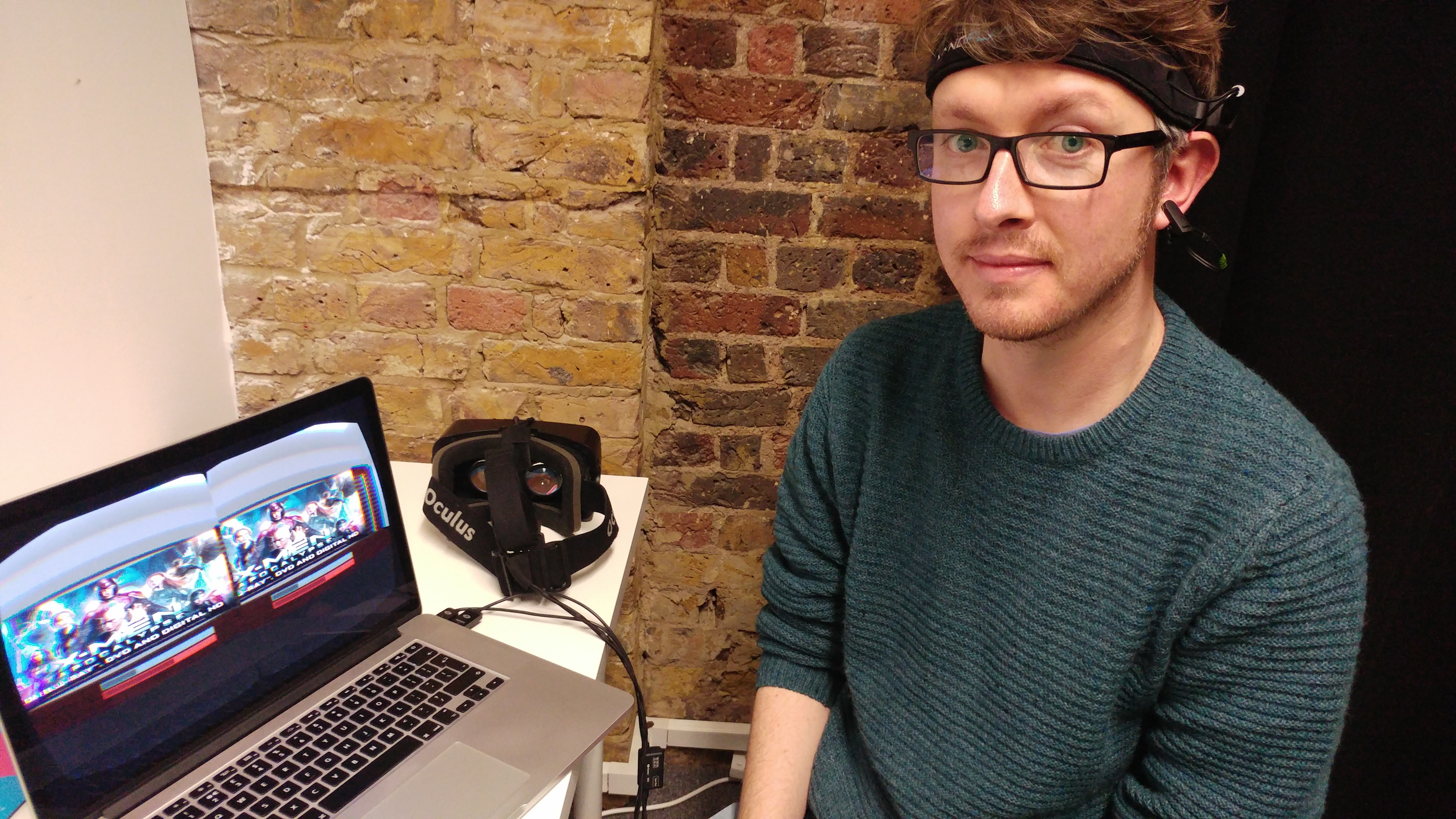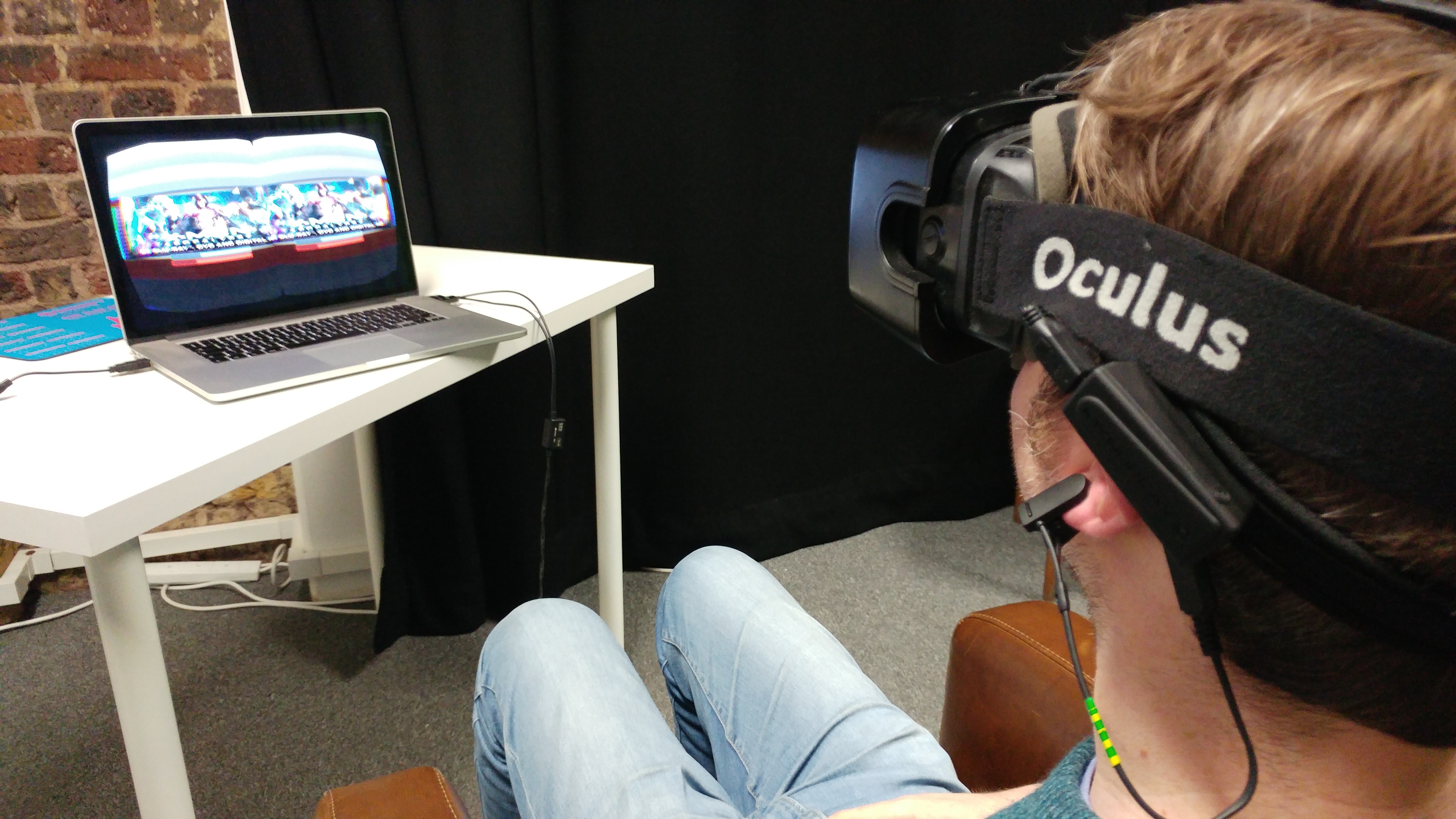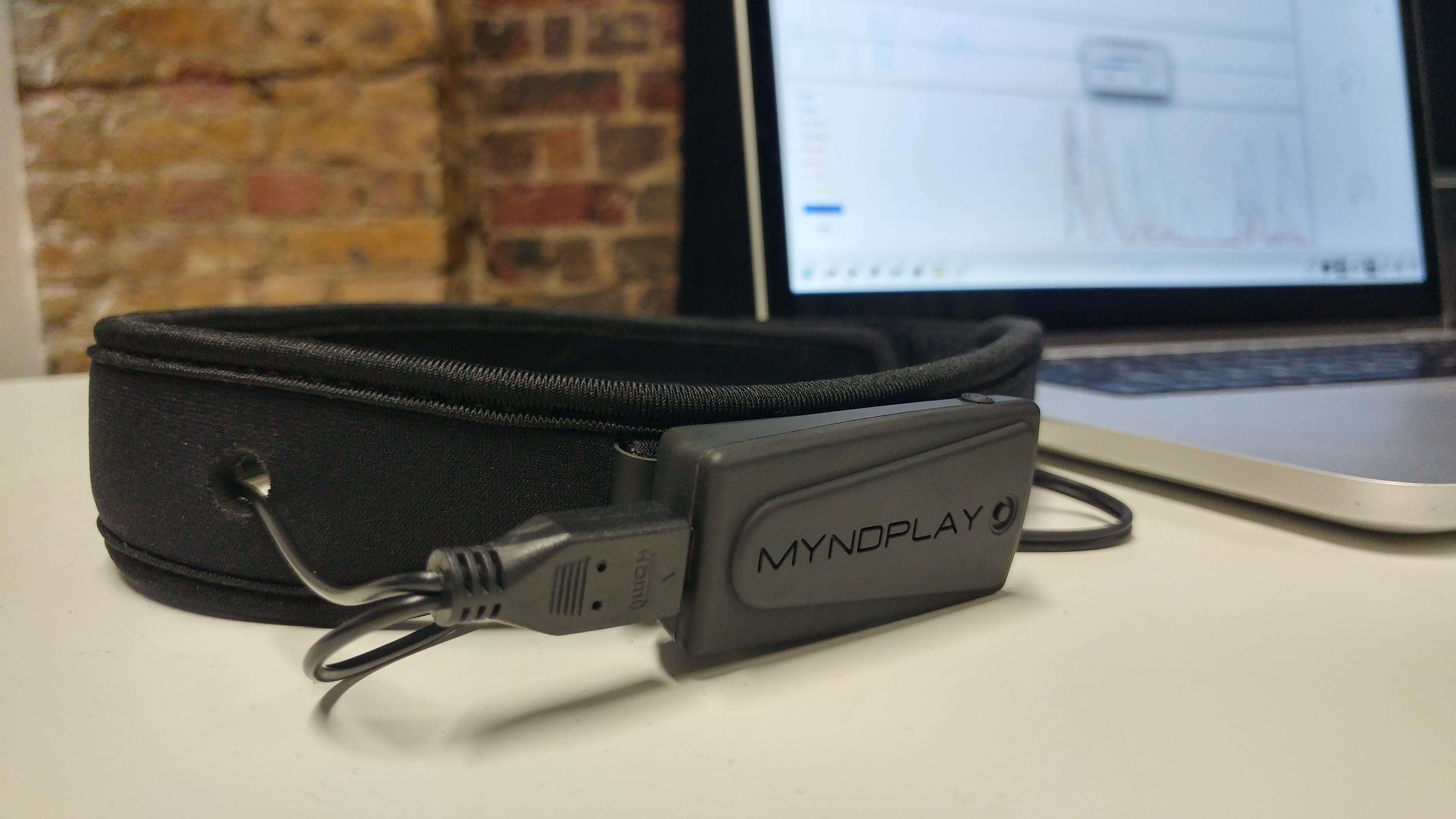I controlled the latest X-Men movie with my mind - and one day you might, too
It’s like Netflix and chill, if Professor X was your date

I’m not sure if the X-Men watch much TV, what with being constantly chased down by the government and super mutants and having to deal with lasers shooting out of their eyes all the time. But, being the superheroes that they are, I’m not sure they’d settle for the standard passive Seinfeld experience.
Instead, Wolverine and co would probably be looking for something with a little more of the X-factor, something with a little more agency involved with which to flex their superheroic talents.
Something a little more like MyndPlay, which (in true comic-book multiverse fashion) may well be at least one of, if not the possible future for movies on the big screen.
Choose your own adventure
I was hooked up to MyndPlay’s brainwave monitoring Electroencephalogram (EEG) headset, along with an Oculus Rift strapped to my head, for the Blu-ray launch of X-Men: Apocalypse.
Using a special cut of scenes from the movie, with edits to make a rough branching version of the storyline with multiple outcomes, I was tasked with directing the action just using the power of my thoughts alone. It’s like Netflix and chill, if Professor X was your date, and the plot of the movie worked more like a ‘Choose Your Own Adventure’ book.

So, how’s this work? Here comes the science. Using a single dry-sensor ECG, MyndPlay can track the electrical activity in your brain, based on three control parameters: mental focus (or ‘linear focus’, focusing on a single object), relaxation and ‘the zone’ - a measure of both high focus and relaxation working in tandem.
By gauging a user’s response to onscreen content through these parameters, MyndPlay’s branching video player can then return video tailored to what you’re most interested in.
Get daily insight, inspiration and deals in your inbox
Sign up for breaking news, reviews, opinion, top tech deals, and more.
“You can say, I want to concentrate specifically on this character as I want to know more about him,” says Tre Azam, CEO and founder of MyndPlay.
“So the narrative might say something to suggest you concentrate on one character, and something will happen depending on the level of attention you pay.
“It could jump to a different sequence of narrative. The point is you can have a complete spider web of possibilities depending on your response. As a director or producer, you have the potential to offer any narrative possibility.”
'VR is changing everything'
While similar demos in the past have faced criticism due to the fact it’s difficult to lock down precisely what element of a flat onscreen scene has elicited a response in a viewer, the addition of virtual reality head tracking has the potential to make the whole system far more precise.
“VR is changing everything,” says Azam.
“One of the criticisms of our system in the past was that you’re not immersed. If I’m looking at a TV screen, it’s flat, you don’t know what I’m focussing on. With VR we have things like markers and 360-degree video, and as production companies become more comfortable making 360 content, we can narrow down where your centre of focus is and respond to it.”

Though it’s not quite perfect (and MyndPlay’s accuracy is difficult to ascertain outside of a closed deep-testing scenario), my brief time with the technology certainly made me feel like I was in control of the action. Having to maintain a level of focus to help inspire a happy outcome for the Marvel heroes, I definitely saw my influence on show when the big bad Apocalypse began to take control as I purposefully distracted myself with rapid eye blinks and head shakes.
The scenes, more or less, cut to edits to match the intended path I had been offered. But it showed the potential limitations too - a fast cut near a scene-triggering moment was almost impossible to bend to my will, as the change of character meant I couldn’t help but lose focus and center in on the new star onscreen.
That, however, could be down to the specific parameters set for the unique MyndPlay demo I tried. An average emotional response over time could be used to measure my focus, but for the sake of the demo, a more challenging final focus level was used to determine each cut.
Collective conciousness
The system not only has potential for solo viewing, but for large-scale audience events, too.
“Going forward, you could see the X-Men in a cinema, and choose to side with Professor X or Magneto, with the collective consciousness deciding the outcome of the movie,” suggests Azam.
“It’s about taking movies to another level - interactive stories have never been seamless, you always have to stop to chose a narrative direction. But here the response from your brain is going to make the choice.”
That’s not to say directors won’t have the opportunity to play with audiences in unexpected ways. Just because a narrative isn’t set in stone, a director could still make surprising decisions based on your emotional responses.
“If a viewer drops below a certain level of attention, you can change the narrative - they’re clearly getting bored,” says Azam.
“It allows you to personalise your movie experience to a single viewer - changing the protagonist or hero, for instance.
“As a director, I can measure your negative response to a character, and punish you! Don’t like that character? Well that’s who you’ve got as your bad guy then!”
Untapped potential
The technology is also being used outside the realms of entertainment too, in areas where brainwave data can be insightful or manipulated in positive ways.

“We do a lot of work in sports, we work in mental health, we work in education,” says Azam.
“We’ve got apps for ADHD, we’ve got apps for dating, we’ve got zombie games. It’s not about movies, it’s about content. We have an app that’s designed to make you angry, and it’s being used to treat young offenders.”
At the moment, lots of MyndPlay’s potential remains untapped. There’s promise there - the thought of being popped into the middle of Charles Xavier’s mansion in VR, and being able to follow a specific mutant’s adventures just by focussing thoughts on them, is tantalising.
But with only a virtual cinema screen and repurposed footage to gauge it with, at present it’s a case of using your mutant powers to gaze longingly into a future where Hollywood directors are creating bespoke films for the platform.
For Azam and MyndPlay though, the potential to impact on the entertainment world is the most exciting use for the technology possible.
“We’re still not fully au fait or comfortable with the stage that it’s at right now,” said Azam.
“It’s about getting people to understand not the limitations, but the potential of the technology, and also of the brain.
X-Men: Apocalypse is out on Blu-ray and DVD now.
Gerald is Editor-in-Chief of iMore.com. Previously he was the Executive Editor for TechRadar, taking care of the site's home cinema, gaming, smart home, entertainment and audio output. He loves gaming, but don't expect him to play with you unless your console is hooked up to a 4K HDR screen and a 7.1 surround system. Before TechRadar, Gerald was Editor of Gizmodo UK. He is also the author of 'Get Technology: Upgrade Your Future', published by Aurum Press.
